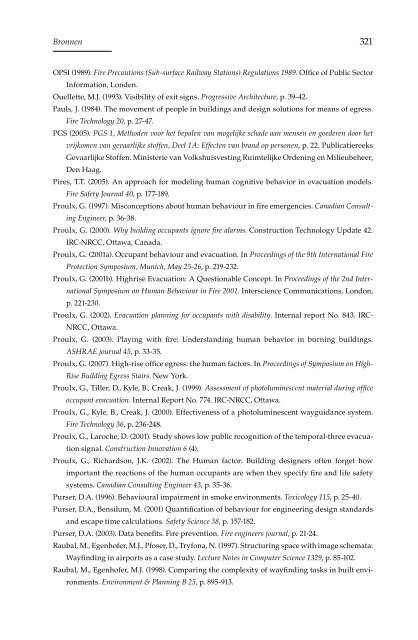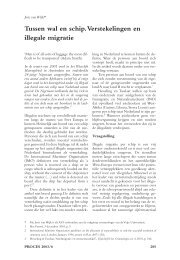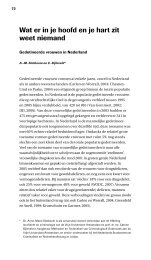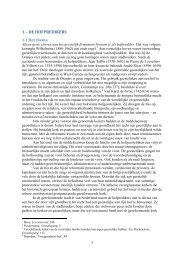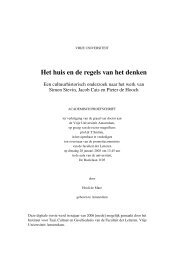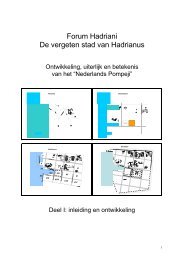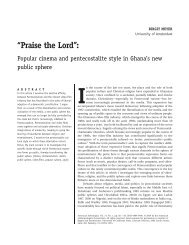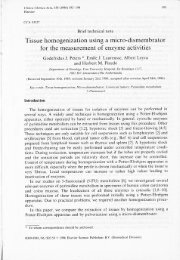Zelfredzaamheid bij brand.pdf - VU-DARE Home - Vrije Universiteit ...
Zelfredzaamheid bij brand.pdf - VU-DARE Home - Vrije Universiteit ...
Zelfredzaamheid bij brand.pdf - VU-DARE Home - Vrije Universiteit ...
Create successful ePaper yourself
Turn your PDF publications into a flip-book with our unique Google optimized e-Paper software.
Bronnen 321<br />
OPSI (1989). Fire Precautions (Sub-surface Railway Stations) Regulations 1989. Office of Public Sector<br />
Information, Londen.<br />
Ouellette, M.J. (1993). Visibility of exit signs. Progressive Architecture, p. 39-42.<br />
Pauls, J. (1984). The movement of people in buildings and design solutions for means of egress.<br />
Fire Technology 20, p. 27-47.<br />
PGS (2005). PGS 1, Methoden voor het bepalen van mogelijke schade aan mensen en goederen door het<br />
vrijkomen van gevaarlijke stoffen, Deel 1A: Effecten van <strong>brand</strong> op personen, p. 22. Publicatiereeks<br />
Gevaarlijke Stoffen. Ministerie van Volkshuisvesting Ruimtelijke Ordening en Milieubeheer,<br />
Den Haag.<br />
Pires, T.T. (2005). An approach for modeling human cognitive behavior in evacuation models.<br />
Fire Safety Journal 40, p. 177-189.<br />
Proulx, G. (1997). Misconceptions about human behaviour in fire emergencies. Canadian Consulting<br />
Engineer, p. 36-38.<br />
Proulx, G. (2000). Why building occupants ignore fire alarms. Construction Technology Update 42.<br />
IRC-NRCC, Ottawa, Canada.<br />
Proulx, G. (2001a). Occupant behaviour and evacuation. In Proceedings of the 9th International Fire<br />
Protection Symposium, Munich, May 25-26, p. 219-232.<br />
Proulx, G. (2001b). Highrise Evacuation: A Questionable Concept. In Proceedings of the 2nd International<br />
Symposium on Human Behaviour in Fire 2001. Interscience Communications, London,<br />
p. 221-230.<br />
Proulx, G. (2002). Evacuation planning for occupants with disability. Internal report No. 843. IRC-<br />
NRCC, Ottawa.<br />
Proulx, G. (2003). Playing with fire: Understanding human behavior in burning buildings.<br />
ASHRAE journal 45, p. 33-35.<br />
Proulx, G. (2007). High-rise office egress: the human factors. In Proceedings of Symposium on High-<br />
Rise Building Egress Stairs. New York.<br />
Proulx, G., Tiller, D., Kyle, B., Creak, J. (1999). Assessment of photoluminescent material during office<br />
occupant evacuation. Internal Report No. 774. IRC-NRCC, Ottawa.<br />
Proulx, G., Kyle, B., Creak, J. (2000). Effectiveness of a photoluminescent wayguidance system.<br />
Fire Technology 36, p. 236-248.<br />
Proulx, G., Laroche, D. (2001). Study shows low public recognition of the temporal-three evacuation<br />
signal. Construction Innovation 6 (4).<br />
Proulx, G., Richardson, J.K. (2002). The Human factor: Building designers often forget how<br />
important the reactions of the human occupants are when they specify fire and life safety<br />
systems. Canadian Consulting Engineer 43, p. 35-36.<br />
Purser, D.A. (1996). Behavioural impairment in smoke environments. Toxicology 115, p. 25-40.<br />
Purser, D.A., Bensilum, M. (2001) Quantification of behaviour for engineering design standards<br />
and escape time calculations. Safety Science 38, p. 157-182.<br />
Purser, D.A. (2003). Data benefits. Fire prevention. Fire engineers journal, p. 21-24.<br />
Raubal, M., Egenhofer, M.J., Pfoser, D., Tryfona, N. (1997). Structuring space with image schemata:<br />
Wayfinding in airports as a case study. Lecture Notes in Computer Science 1329, p. 85-102.<br />
Raubal, M., Egenhofer, M.J. (1998). Comparing the complexity of wayfinding tasks in built environments.<br />
Environment & Planning B 25, p. 895-913.


